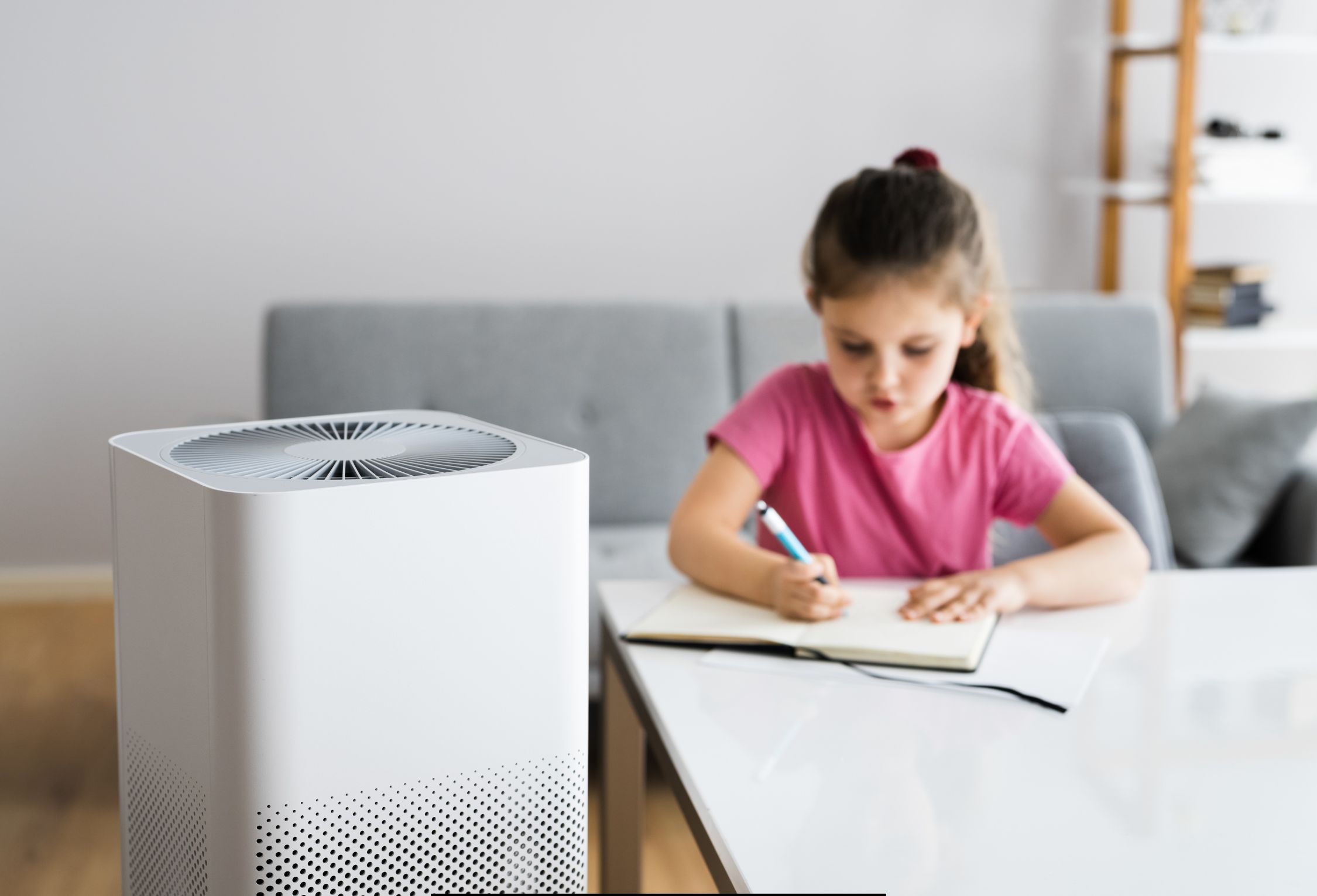Creating a safe and healthy environment for your baby is one of the most important tasks for any parent. From choosing the right crib to selecting organic fabrics for baby clothes, every detail matters. One often overlooked but essential factor in ensuring your baby’s well-being is air quality. Poor indoor air quality can contribute to a variety of health issues, including allergies, respiratory problems, and skin irritation. This is where air purifiers come in offering an effective solution for preventing allergies and ensuring your baby’s nursery is a healthy, safe haven. In this article, we’ll explore how air purifiers can help protect your baby from allergens and improve the air quality in their nursery.
The Importance of Clean Air in Your Baby’s Nursery
Babies have delicate immune systems that are still developing, making them more vulnerable to environmental factors like dust, pollen, pet dander, and mold. These allergens are commonly found in indoor air, especially in homes with carpets, curtains, pets, or poorly ventilated rooms. Since babies spend a lot of time in their nurseries, it’s crucial to maintain an environment free of allergens that could trigger respiratory problems or skin conditions.
Common Indoor Allergens in the Nursery
Dust Mites: These microscopic pests thrive in bedding, furniture, and soft toys. Dust mites are one of the leading causes of allergic reactions in children.
Pet Dander: Even if you don’t have a pet in the nursery, pet dander can still be present in the air, especially in households with pets.
Mold and Mildew: Damp areas in the nursery, especially near windows or bathrooms, can foster mold growth, which releases spores into the air.
Pollen: During certain seasons, pollen can enter the home through open windows or on clothing, affecting your baby’s health.
Volatile Organic Compounds (VOCs): Many household products, such as paints, cleaners, and new furniture, can release VOCs into the air, which may irritate your baby’s lungs and skin.How Air Purifiers Work to Improve Air Quality
An air purifier is a device designed to filter out pollutants and allergens from the air, making it cleaner and safer to breathe. Air purifiers use different filtration technologies to remove various types of particles and chemicals from indoor air. Here’s how they work:
- HEPA Filtration
One of the most common types of filtration found in air purifiers is High-Efficiency Particulate Air (HEPA) filtration. HEPA filters can trap particles as small as 0.3 microns with a high level of efficiency. This includes most allergens like dust mites, pet dander, and pollen.
By removing these tiny particles from the air, a HEPA filter helps create a healthier environment in your baby’s nursery. Since babies often crawl on the floor and explore their surroundings with their hands, reducing airborne allergens is crucial to preventing allergic reactions and respiratory issues.
- Activated Carbon Filters
Air purifiers equipped with activated carbon filters are particularly effective at eliminating gases, odors, and VOCs. These filters work by absorbing harmful chemicals, such as formaldehyde from new furniture or cleaning products, into their pores.
In your baby’s nursery, an activated carbon filter can help reduce unpleasant odors and toxic fumes, creating a more comfortable and healthier environment for your baby to sleep and play.
- UV-C Light Technology
Some air purifiers also include UV-C light technology, which helps kill bacteria, viruses, and mold spores. This additional feature provides an extra layer of protection against airborne pathogens that may compromise your baby’s health.
UV-C light can be particularly useful in preventing respiratory infections and mold-related allergies by neutralizing harmful microorganisms that may be present in the nursery air.
Benefits of Using Air Purifiers in Your Baby’s Nursery
Reduces Allergens and Irritants
Air purifiers help eliminate common allergens and irritants from the air, significantly reducing your baby’s exposure to potential triggers. Whether your baby is prone to eczema, asthma, or other allergic reactions, using an air purifier can help alleviate symptoms and improve their overall health.
By filtering out dust, pet dander, mold spores, and pollen, you create a cleaner and healthier atmosphere that supports your baby’s immune system and lung development.
Improves Sleep Quality
A baby’s sleep is crucial for growth and development, and poor air quality can disrupt it. Allergens like dust and pollen can cause discomfort, leading to restlessness, coughing, and difficulty sleeping. With a clean and allergen-free environment, your baby is more likely to enjoy uninterrupted, restful sleep.
Air purifiers can also help reduce the presence of airborne particles that may cause snoring or nasal congestion, promoting healthier and more peaceful sleep for both your baby and yourself.
Prevents Respiratory Issues
Babies are particularly vulnerable to respiratory problems due to their underdeveloped lungs and immune systems. Polluted air can exacerbate conditions such as asthma, bronchitis, and respiratory infections. By using an air purifier, you reduce the risk of triggering these conditions, providing your baby with the healthiest air possible.
For babies with pre-existing respiratory conditions, air purifiers can play an essential role in minimizing flare-ups and preventing complications.
Fosters a Safer Environment
Using an air purifier in your baby’s nursery creates a safer environment by eliminating harmful chemicals, bacteria, and viruses that could jeopardize their health. It offers peace of mind for parents concerned about the potential risks of poor indoor air quality.
With improved air quality, your baby can enjoy a safe space where they can play, sleep, and grow without being exposed to unnecessary risks.
Choosing the Right Air Purifier for Your Baby’s Nursery
When selecting an air purifier for your baby’s nursery, it’s essential to consider a few factors to ensure it’s both effective and safe.
- Filter Types
Choose an air purifier with a HEPA filter for maximum allergen removal. If you’re concerned about VOCs or odors, look for a model that includes an activated carbon filter. A unit with UV-C light technology is an added bonus for sterilizing the air.
- Size of the Room
Ensure that the air purifier is designed for the size of your baby’s nursery. Air purifiers are rated for specific room sizes, so it’s essential to choose a model that matches the dimensions of the nursery to maximize its efficiency.
- Noise Levels
Since air purifiers work continuously, selecting one that operates quietly is important, especially in a nursery. Look for a model with a low decibel rating to avoid disturbing your baby’s sleep.
- Safety Features
Make sure the air purifier is safe for use in a nursery. Avoid units with exposed fans or parts that could pose a risk to curious babies. Additionally, consider a model with a child-lock feature to prevent accidental changes to settings.
Maintaining Your Air Purifier
To ensure optimal performance, regular maintenance is necessary. Clean or replace filters as recommended by the manufacturer, and keep the unit free from dust and debris. Regular upkeep will help maintain the effectiveness of the air purifier and keep the nursery air as clean as possible.
Air purifiers are a valuable investment in your baby’s health, offering a simple yet effective way to improve indoor air quality and prevent allergies. By removing harmful allergens, bacteria, and chemicals, air purifiers create a safer, healthier nursery environment for your baby to thrive in. With the right air purifier, you can help protect your baby’s respiratory health, promote better sleep, and create a nurturing space for them to grow. Investing in clean air today ensures a healthier future for your little one tomorrow.



